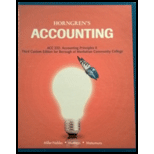
Concept explainers
Accounting for uncollectible accounts using the allowance method (percent-of-sales) and reporting receivables on the
Beta Watches completed the following selected transactions during 2016 and 2017:
2016
Dec. 31 Estimated that
31 Made the closing entry for bad debts expense. 2017
Jan. 17 Sold merchandise inventory to Marty Viller, $900, on account. Ignore Cost of Goods Sold.
Jun. 29 Wrote off Marty Viller's account as uncollectible after repeated efforts to collect from him.
Aug. 6 Received $900 from Marty Viller, along with a letter apologizing for being so late. Reinstated Viller's account in full and recorded the cash receipt.
Dec. 31 Made a compound entry to write off the following accounts as uncollectible: Bob Keffer, $1,900; Mary Martin, $1,000; and Robert Ronson, $400.
31 Estimated that bad debts expense for the year was 3% on credit sales of $500,000 and recorded the expense.
31 Made the closing entry for bad debts expense.
Requirements
1. Open T-accounts for Allowance for Bad Debts and Bad Debts Expense. Keep running balances, assuming all accounts begin with a zero balance.
2. Record the transactions in the general journal, and post to the two T-accounts.
3. Assume the December 31, 2017, balance of
Want to see the full answer?
Check out a sample textbook solution
Chapter 9 Solutions
ACCOUNTING PRINCIPLES 222 5/16 >C<
- Bramwell Industries produces joint products C and D from Material X in a single operation. 500 gallons of Material X, costing $1,200, produce 300 gallons of Product C, selling for $2.00 per gallon, and 200 gallons of Product D, selling for $4.00 per gallon. The portion of the $1,200 cost that should be allocated to Product C using the value basis of allocation is____.solve thisarrow_forwardThe net cash flows from operating activities on the statment of cash flowsarrow_forwardCalculate the standard quantity of direct labor for one handkerchief of this general accounting questionarrow_forward
 Financial Accounting: The Impact on Decision Make...AccountingISBN:9781305654174Author:Gary A. Porter, Curtis L. NortonPublisher:Cengage Learning
Financial Accounting: The Impact on Decision Make...AccountingISBN:9781305654174Author:Gary A. Porter, Curtis L. NortonPublisher:Cengage Learning Cornerstones of Financial AccountingAccountingISBN:9781337690881Author:Jay Rich, Jeff JonesPublisher:Cengage Learning
Cornerstones of Financial AccountingAccountingISBN:9781337690881Author:Jay Rich, Jeff JonesPublisher:Cengage Learning College Accounting (Book Only): A Career ApproachAccountingISBN:9781337280570Author:Scott, Cathy J.Publisher:South-Western College Pub
College Accounting (Book Only): A Career ApproachAccountingISBN:9781337280570Author:Scott, Cathy J.Publisher:South-Western College Pub College Accounting (Book Only): A Career ApproachAccountingISBN:9781305084087Author:Cathy J. ScottPublisher:Cengage Learning
College Accounting (Book Only): A Career ApproachAccountingISBN:9781305084087Author:Cathy J. ScottPublisher:Cengage Learning Intermediate Accounting: Reporting And AnalysisAccountingISBN:9781337788281Author:James M. Wahlen, Jefferson P. Jones, Donald PagachPublisher:Cengage Learning
Intermediate Accounting: Reporting And AnalysisAccountingISBN:9781337788281Author:James M. Wahlen, Jefferson P. Jones, Donald PagachPublisher:Cengage Learning





